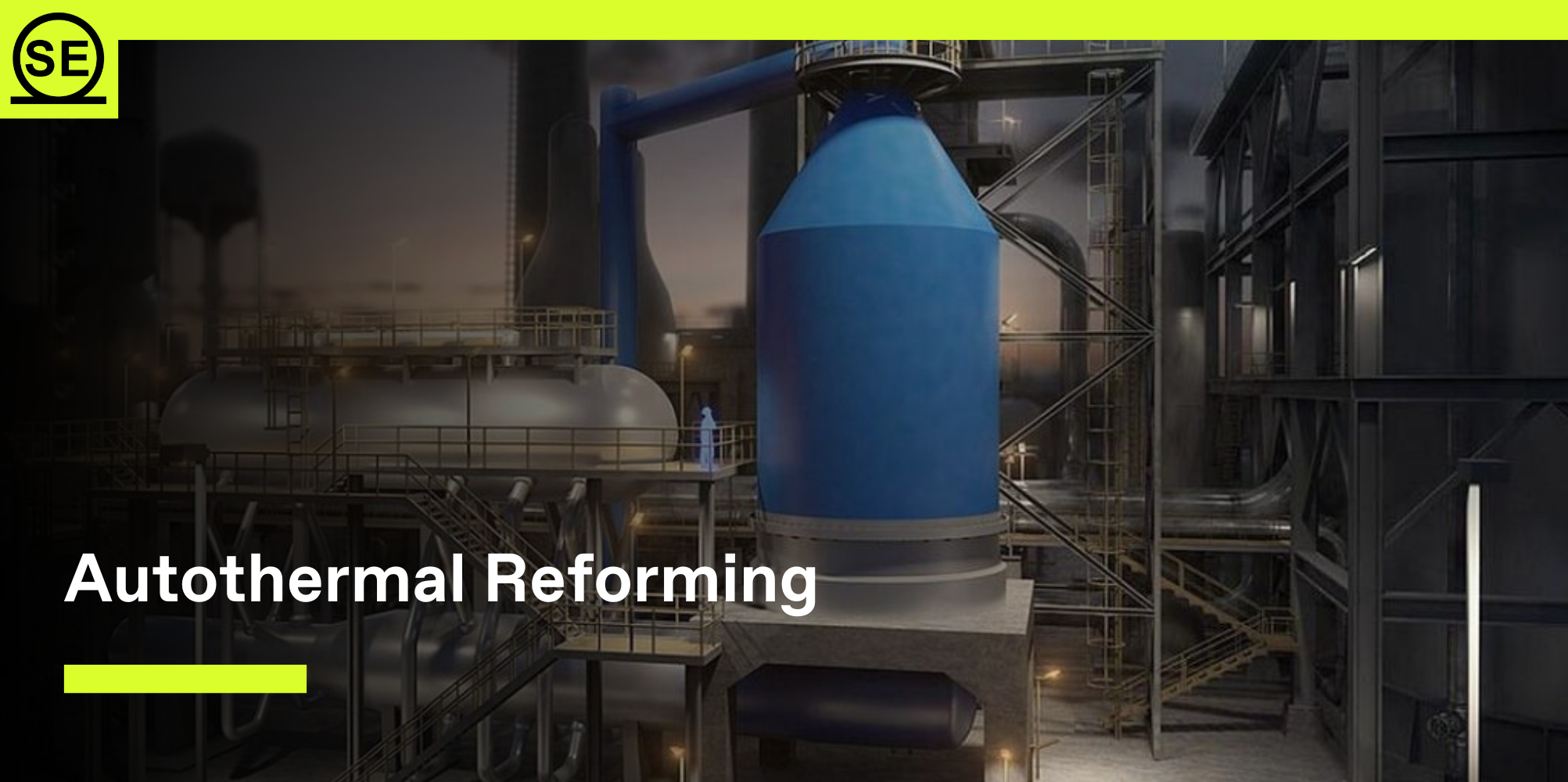
Autothermal Reforming: Enhancing Efficiency in Hydrogen Production
In the quest for sustainable and efficient energy solutions, autothermal reforming (ATR) emerges as a pivotal technology, especially in the hydrogen production landscape. Explore the concept of autothermal reforming, its advantages, and its potential applications, focusing on how this technology is optimizing the hydrogen production process.
What is Autothermal Reforming?
Autothermal reforming is a process that combines aspects of both steam methane reforming (SMR) and partial oxidation (POX) to produce hydrogen, carbon monoxide, and carbon dioxide from hydrocarbons, primarily natural gas. This process is termed “autothermal” because it achieves the necessary heat balance internally through the exothermic reaction of partial oxidation and the endothermic reaction of steam reforming, without the need for additional heat.
The Process of Autothermal Reforming
The ATR process involves three key steps:
- Mixture Preparation: Natural gas is mixed with steam and oxygen. The proportion of oxygen is critical and leads to partial combustion.
- Reaction Phase: The mixture is introduced into a reactor containing a catalyst, typically based on nickel. Within the reactor, the exothermic oxidation of methane and other hydrocarbons provides heat for the endothermic steam reforming reaction.
- Heat and Reaction Management: The design of the reactor is crucial, as it must manage the heat effectively to optimize both reactions. The outcome is a synthesis gas (syngas), a mixture of hydrogen and carbon monoxide.
Advantages of Autothermal Reforming
Efficiency: ATR is more thermally efficient than other methods, as it internally balances the heat requirements, reducing the need for external energy inputs.
Scalability: The process can be scaled up effectively, making it suitable for large-scale hydrogen production. This scalability is crucial as demand for hydrogen increases, particularly for fuel cell applications.
Flexibility: ATR can process a variety of feedstocks, including lower-quality hydrocarbons, providing more flexibility in resource utilization.
Speed: The ATR process is faster than traditional SMR, as it does not require additional heating steps. This rapid processing capability can significantly enhance production efficiency.
Applications of Autothermal Reforming
Hydrogen Production: The primary application of ATR is in hydrogen production, especially for industrial uses and as a cleaner fuel alternative in transport.
Synthesis Gas Production: Beyond hydrogen, the syngas produced via ATR is a valuable feedstock for the chemical industry, used in the production of methanol, ammonia, and other chemicals.
Integrated Gasification Combined Cycle (IGCC): ATR can be integrated into IGCC systems for power generation, where it helps in producing cleaner energy from a variety of fuel sources, including coal and biomass.
Autothermal reforming Challenges and Future Prospects
While ATR offers numerous advantages, it also faces challenges such as catalyst deactivation and the need for precise oxygen control. Ongoing research is focused on improving catalyst performance and process dynamics to further enhance efficiency and reduce costs. An ATR also requires oxygen, so either an oxygen supply must be available or an air separation unit must be built.
As the global energy landscape shifts, autothermal reforming stands out as a technology that can significantly contribute to the transition. Its ability to efficiently produce hydrogen and other valuable gasses positions it as a key player in the future of energy production, particularly in sectors striving to reduce carbon emissions.
At Samuel, our hydrogen team brings a broad range of hydrogen, syngas, and autothermal reforming expertise. With decades of experience, Samuel will maximize value and efficiency at every stage of your project, including engineering, procurement, modular fabrication, and construction. Contact John Cotten (jcotten@samuelengineering.com) to learn more.
